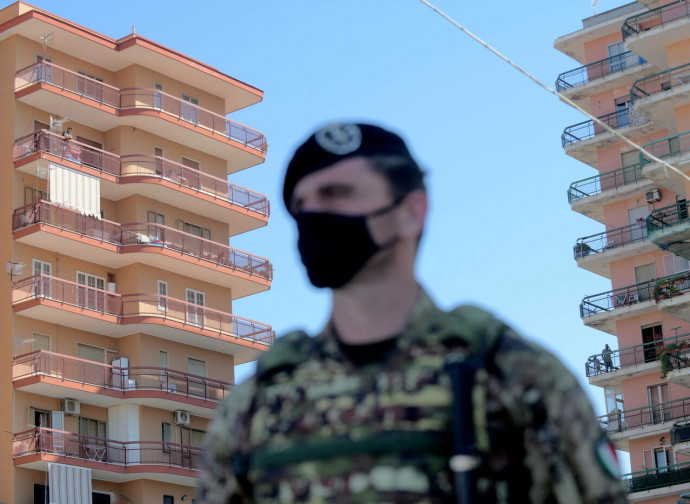Will it return like the Spanish flu? The propaganda of fear
Fear-mongering propaganda uses the spectre of the 1918 Spanish flu to support the hypothesis of a dangerous second wave of COVID-19. This is irrational. It portrays the coronavirus as a force of nature beyond our control. The concept of a "second wave" in epidemiology is an imperfect one. It would be more worthwhile to study how the virus "hides out" in host animals and find ways to eradicate it.

In recent days, fear-mongering propaganda is persistently using the 1918 Spanish flu pandemic to give credence to a second COVID-19 wave in the fall. This form of propaganda begins with irrational considerations and tends to depict COVID-19 as a force of nature that is beyond our control.
The rates of contagion are decreasing drastically. Many people are finally returning to work as businesses reopen their doors. Yet, propaganda insists that until a vaccine is found, we cannot be sure of anything. Hence, we will have to continue living in fear of the Great Return.
However, the concept of "second wave", from an epidemiological standpoint, is an imperfect one. When it is presented as a mere hypothesis, it can create misunderstandings of the pandemic. The idea of a second wave derives from flawed comparisons with seasonal flu viruses. At the beginning of the pandemic, many experts discussed similarities between SARS-CoV-2 and influenza. They are both viruses that cause respiratory infections, which are “mostly mild” they said. Influenza is also the cause of the most recent pandemics. From these supposed similarities, it was estimated that the COVID-19 virus would behave like a flu pandemic. Yet, these are very different viruses which exhibit very different behavior.
Thanks to autopsies - performed despite obstructions by the Italian government - we have been able to ascertain how the COVID-19 virus behaves and the damage it causes.
Continuing to compare influenza viruses to COVID-19 is conceptually misguided. It is all the more erroneous to compare the current pandemic to the Spanish flu of 1918. This is also true, because during that particular pandemic, the virus infected first the northern hemisphere during the spring of 1918. Then, during the summer, it spread to countries of the southern hemisphere, particularly affecting India where it was brought by British soldiers. In any case, what second wave supporters fail to say is that the Spanish flu virus completely disappeared within a few months and never returned. So if COVID-19 were to behave exactly like the Spanish flu, what sense does investing billions have in finding a vaccine if a virus destined to die out?
But, to repeat, comparing the COVID-19 pandemic to global influenza outbreaks does not hold much water. They are two very different viruses. So why not look at the previous 2002 SARS epidemic? History tells us that this particular coronavirus went away completely after a few months. Why should COVID-19 behave differently from its older brother virus?
Flu viruses have a cyclical trend: every year we see cases of influenza that start in early autumn, peak in winter and then dwindle by summertime. Then, as we well know, these viruses return in different strains the following winter. But where do they go during the summer months? This is a very important aspect which nobody talks about.
In fact, flu viruses "hide" in animals that act as disease reservoirs. For the flu, this means chickens and pigs. It would be very important to devote research to understand in which animals COVID-19 might use as summer hideouts. This knowledge could be useful and essential to eradicate this virus.
Returning to comparisons between flu viruses and COVID-19, influenza has lower transmission rates in summertime due to the combination of higher temperatures, more intense ultraviolet rays from sunlight, and because people spend more time outdoors. Some of these factors may also influence COVID-19, but we don't really know exactly to what extent.
In addition to the seasonality factors, there is another reason why the theory of a second wave is faulty. A second wave implies that it is something unavoidable, that it is something intrinsic to the behavior of the virus. It goes away for a while, but returns with a vengeance. But this idea does not take into account the importance of ongoing preventive actions to be taken and seems to make us think we are defenceless against the whims of a pathogen.
The second wave hypothesis depicts the pandemic as an unstoppable force of nature. And yet we have evidence from many countries that have successfully addressed this pandemic and with very low mortality rates (e.g. Australia) after adopting appropriate strategies without implementing draconian lockdown models (e.g. Italy and China). In addition, they have used therapeutics that have been properly identified as successful. These countries have proved that they are not at the mercy of the virus, neither now nor in the future.
COVID-19 isn't even the spectre of the Spanish flu. And we no longer live in the year 1918.




